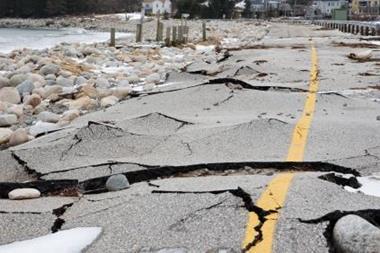For decades residential and commercial property insurance policyholders in the United States have had a place to go if they are having difficulty obtaining coverage in the standard market. By Claire Wilkinson
Established in the late 1960s to ensure continuity of insurance in urban areas, FAIR plans often provide property insurance in both urban and coastal areas, while beach and windstorm plans cover predominantly wind-only risks in designated coastal areas. There are FAIR plans in 32 states and the District of Columbia, while several states including Texas, Mississippi, and South Carolina have sizable beach and windstorm plans.
Over the years, state-run property insurers have experienced explosive growth both in terms of policy count and exposure value. Total policies in force in the plans practically tripled from 931,550 in 1990 to 2.8 million in 2006, while total exposure to loss surged from $54.7 billion in 1990 to $656.7 billion in 2006.
A number of factors have contributed to this overall growth, including rising coastal populations and property values. In fact, the insured value of coastal properties of the United States increased by 24% to $8.9 trillion in 2007, up from $7.2 trillion in 2004, according to a June 2008 study by catastrophe modeller AIR Worldwide, The Coastline at Risk. In Florida and New York, the insured value of coastal properties is now estimated at in excess of $2 trillion in each state, followed by Texas ($895 billion) and Massachusetts ($793 billion).
These rising exposures underscore the point that in some states the residual market plans have shifted away from their original purpose as primarily urban property insurers. As a result, many are evolving from their traditional role as markets of last resort into much larger insurance providers, in some cases even becoming the largest property insurer in a state.
After the record hurricane seasons of 2004 and 2005 with predictions of increased storm activity over the next 15 to 20 years, this shift of high risk exposure away from the private insurance market is placing an enormous burden on these plans. Arguably many of the plans have become homes for the most highly exposed, wind-only risks—in other words the least attractive types of business. In some cases, this has left plans with huge concentrations of risk.
Consequently, it is not surprising that many plans experience severe financial difficulties in certain years. Of the 31 FAIR plans for which data are available, 28 have incurred at least one operating deficit since 1999. Of the seven beach and windstorm plans for which data are available, all have sustained at least one underwriting loss since 1999.
Such frequent volatility in the financial results of the plans raises key questions not just about heightened risk in coastal areas and coastal development, but about rate adequacy. The funding that underpins the plans in many cases is not sufficient to offset the rising coastal exposures.
FAIR, beach and windstorm plans are run by state insurance regulators in conjunction with private insurers and basically operate as pools, combining public and private resources to finance economic recovery from loss.
State laws allow the plans to recover any losses in excess of their claims-paying resources by assessing the insurance policies of home and business owners throughout a state, even those who may not live on the coast and may never have filed a claim. In some cases even unrelated lines of insurance such as auto and commercial liability coverages can be assessed. Certain plans have experienced deficits and levied assessments in particular years. For example, both Florida and Louisiana’s 2005 deficits resulted in the levying of assessments on virtually all residential property owners in their states.
Fortunately, the relatively calm hurricane seasons of 2006 and 2007 have provided some respite. Preliminary data for 2007 and 2008 indicate that policy counts may be flattening out in certain states such as Florida and Louisiana, as depopulation plans take effect and as new construction slows due to a deteriorating economy and credit crunch. Under these plans state-run insurers can transfer policies back to private insurers, subject to regulatory approval.
Uncertainties remain, however. The 2008 hurricane season is not yet done and predictions are for increased storm activity over the next 15 to 20 years. This means that state-run property insurers will be subject to even greater volatility in future. As a result, the long term costs of hurricane-related losses will be passed increasingly to insurance buyers and taxpayers.
Postscript
Claire Wilkinson is vice-president of global issues at the Claire Wilkinson is vice-president of global issues at the Insurance Information Institute (III) and co-author of the III study, Residual Market Property Plans: From Markets of Last Resort to Markets of First Choice, published in June 2008.
clairew@iii.org
www.iii.org Insurance Information Institute (III) and co-author of the III study, Residual Market Property Plans: From Markets of Last Resort to Markets of First Choice, published in June 2008.
clairew@iii.org
www.iii.org



















No comments yet